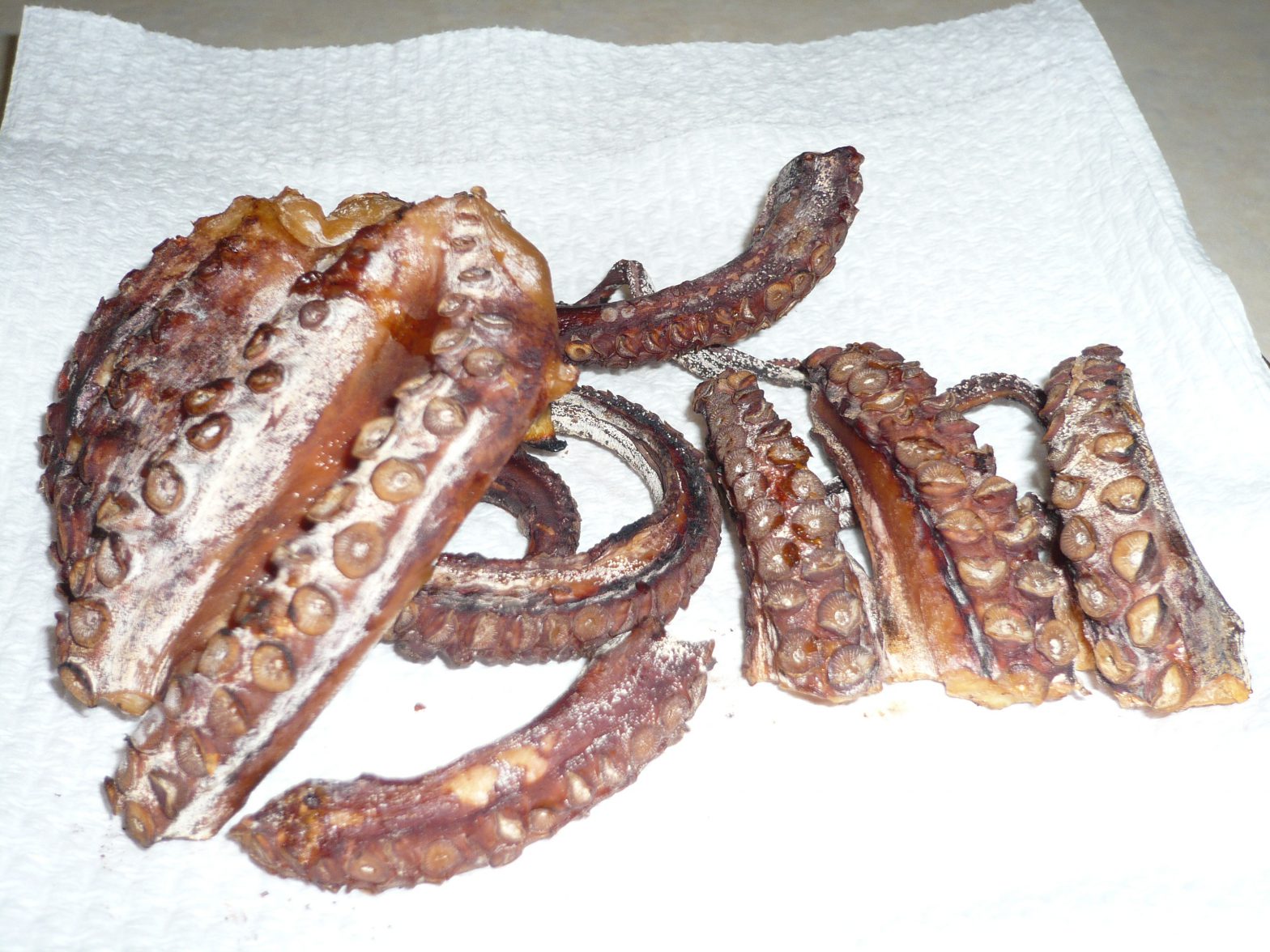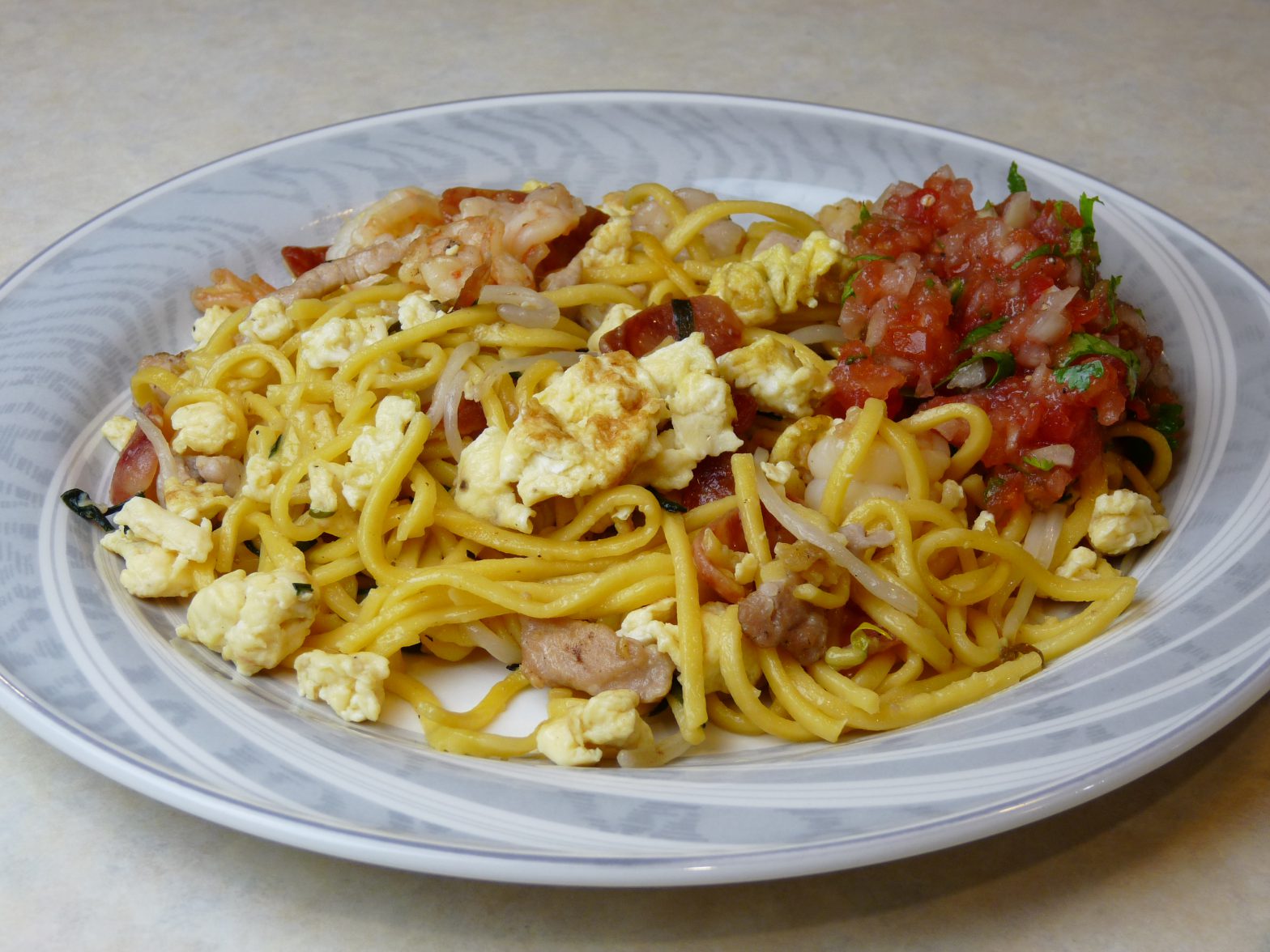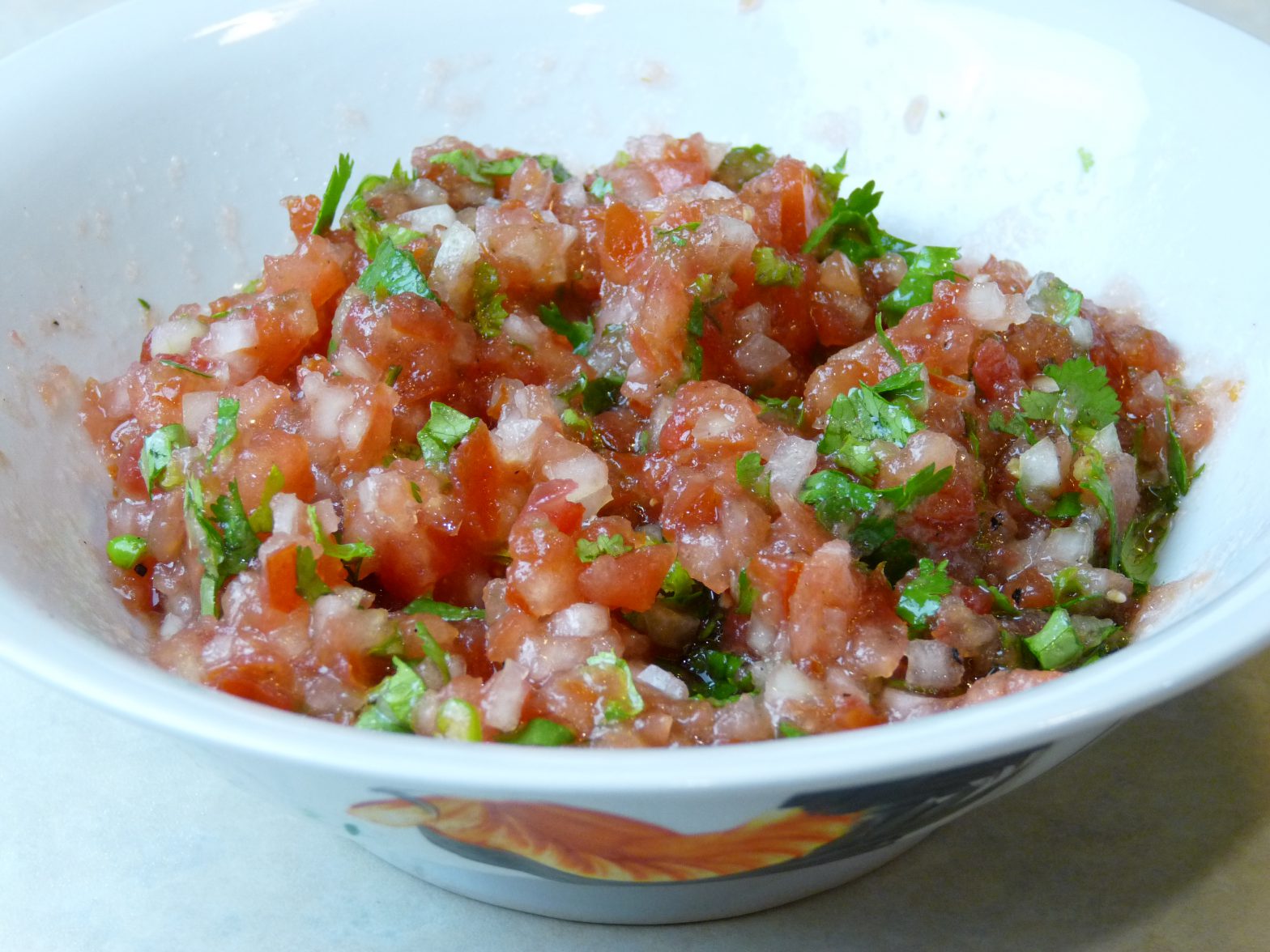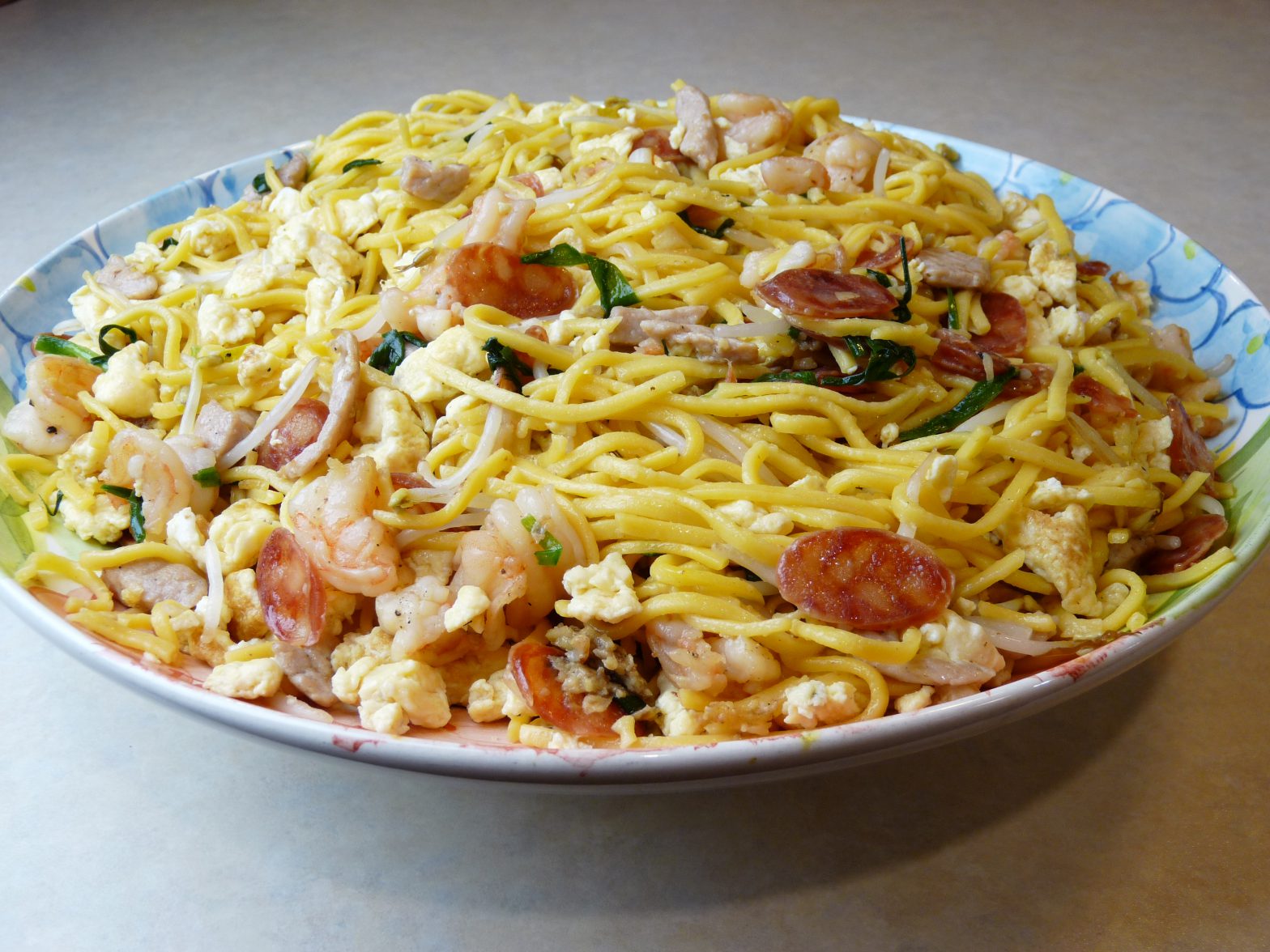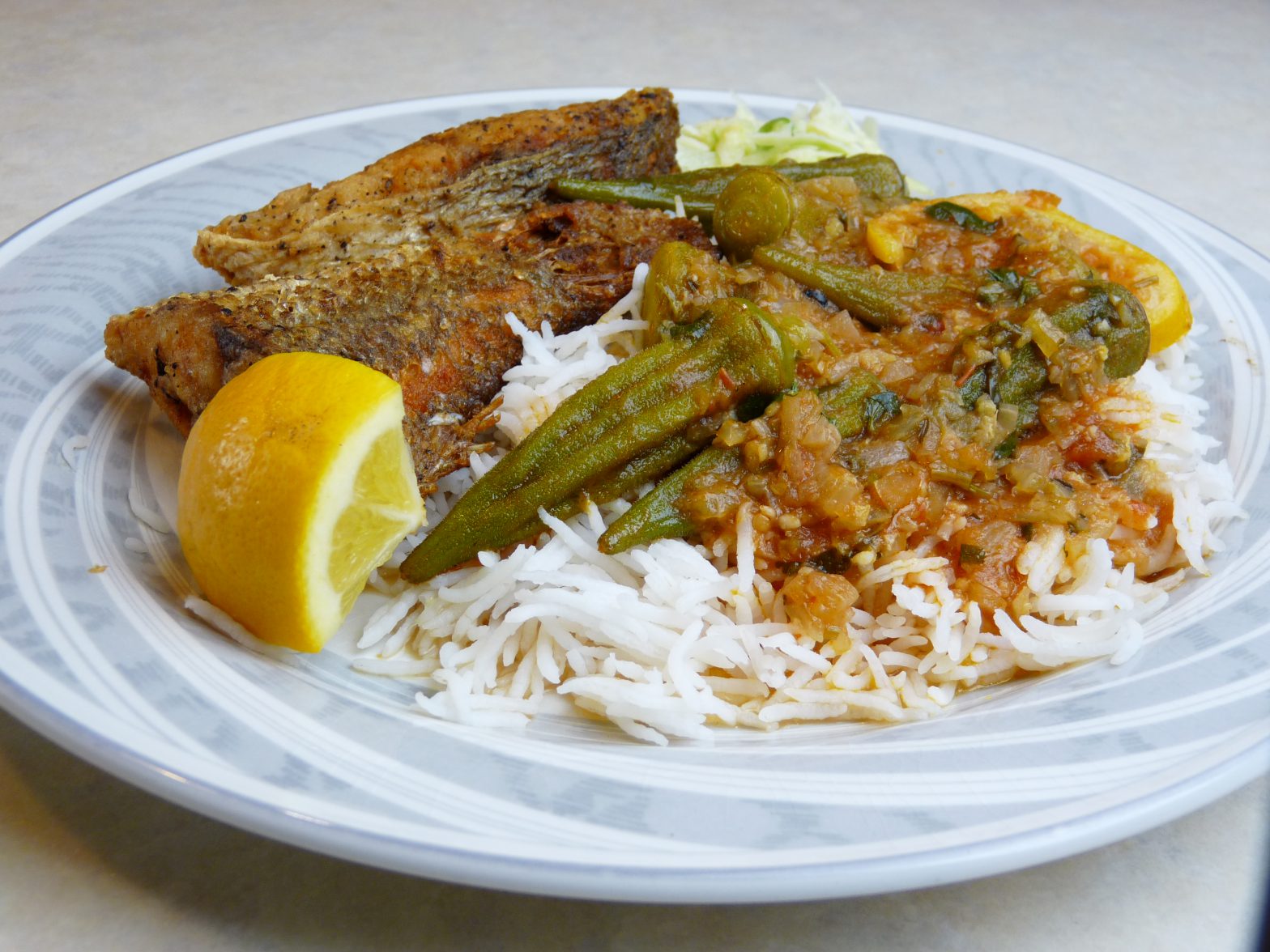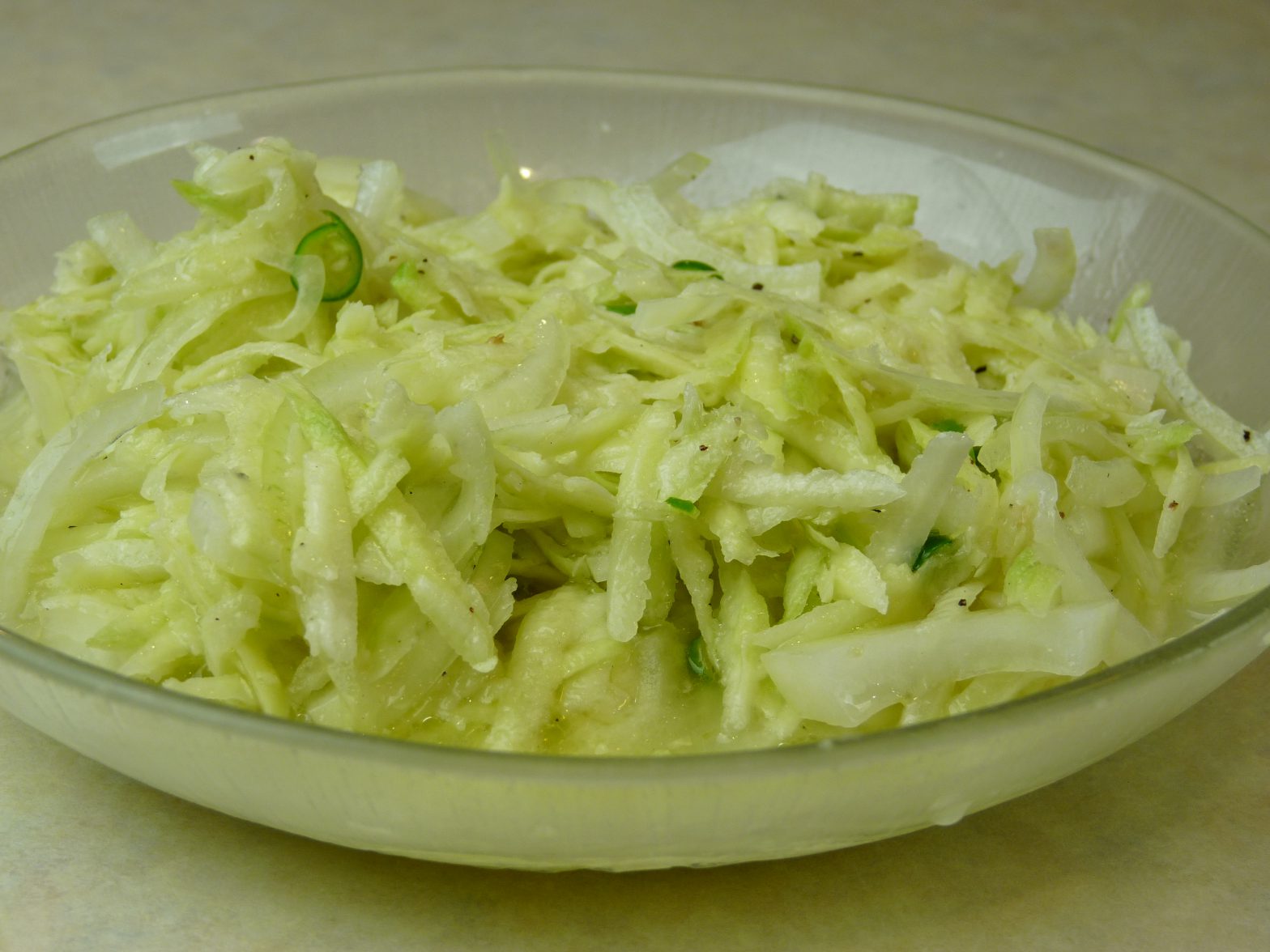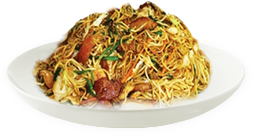
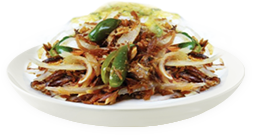
- Achard de légumes (in french)
- Peanut coriander chutney
- Cucumber salad with chillies
- Curry powder hot
- Curry powder mild
- Curry paste
- Curry sauce
- Pickled chillies
- Sweet and sour sauce
- Achar caramboles (Star fruit achar)
- Chatini pistaches cotomili (in french)
- Sauce d'ail (Garlic sauce) in french
- Vegetable achar
- Coriander chutney
- Coconut chutney
- Pickled achar mangoes
- Mango kutcha
- Mazavaroo (hot chilli paste with dried prawns)
- Garlic sauce
- Chatini peau pipengaille (luffa)
- Piments confis (in french)
- Poudre cari fort (in french)
- Poudre cari doux (in french)
- Pâte cari (in french)
- Sauce cari (in french)
- Mayonnaise
- Chilli paste (piments écrasés)
- Tomato chutney (chatini pomme d'amour)
- Dried octopus salad (chatini ourite sec)
- Chatini coriandre - cotomilli (in french)
- Chatini coco - coconut chutney (in french)
- Pickled mangoes (in french)
- Chatini pomme d'amour (in french)
- Achard bilimbi (bilimbi pickle)
- Oyster and prawn bisque
- Bouillon crabes - crab bouillon
- Chinese noodle soup with chicken broth - bouillon mee foon
- Chicken mulligatawny
- Sour and hot soup
- Soupe de tomates - tomato soup with basil
- Tomato soup
- Bouillon crabes (in french)
- Etouffée de brèdes songe et sardines (stewed taro leaves with sardines)
- Choko and pork (or beef) curry
- Eggplant with pork or beef fricassée - fricassée bringeles
- Spiced boiled chickpeas - gram bouilli
- Gratin de giraumon - pumpkin gratin
- Potato chips (double cooked)
- Salade palmiste - palm heart salad
- Heart of palm with parmesan salad
- Stir fried bok choy
- Cat cat manioc - cassava stew
- Bouillabaisse - tasty seafood bouillon
- Watercress bouillon - brêdes martin & giraumon
- Bouillon poisson (optional lalos-okras) fish bouillon
- Chicken and sweet corn soup
- Rasson - spicy vegetarian soup
- Bouillon wantan - wantan soup / fried wantans
- Snake beans with pork stir fry
- Fricassée de pipengaille (luffa) avec porc
- Stir fried beef with broccoli
- Vegetarian fried rice
- Le chou au beurre (buttered cabbage)
- Vegetable bryani
- Gratin de manioc (cassava)
- Potato salad - salade de pomme de terre
- Sauce blanche chou chou (chokoes in white sauce)
- Bitter melon (margoze) with prawns stir fry
- Fricassée de pipengaille avec chevrettes sêches - luffa with dried prawns
- Bouillon brêdes
- Bouillon malgache - beef bouillon with lettuce or watercress
- Bouillon tec tec (pipi bouillon)
- Haleem soup
- La soupe Mama (fresh fish congee-Kai Chock)
- Watercress soup (soupe de cresson)
- Fricassée de chou, carottes et saucisses - cabbage & carrots with sausages
- Stir fried cos lettuce
- Sauce blanche choufleur - cauliflower in white sauce
- Fricassée le chou - stewed cabbage
- Haricots verts à l'ail - green beans with garlic
- Salade chou chou - choko salad
- Stewed okra (lalos) with red chillies
- Tomates à la Provencale
- Onion fritters (bhajas)
- Cheese sticks - batons de fromage
- Croquettes crevettes - prawn fritters
- Dhal pouris
- Tips for dhal pouris
- Dhal pouris (in french)
- Faratas indian bread (paratha)
- Gateau arouille (taro fritters)
- Pork and veal terrine
- Makatia coco - savoury bread with shredded coconut
- Makatia coco - other recipe
- Mulku (murukku)
- Pain perdu french toast
- Sticky chicken wings - marinated chicken wings
- Poulet Annabelle marinated chicken thigh fillets
- Samoosas
- Boulette poisson (fish balls)
- Garlic cream prawns
- Croque monsieur
- Croque madame
- Boulettes chou chou - meatballs with choko, prawn, pork (or beef)
- Chilli cakes - gateaux piments
- Croquettes de morue - salt cod fritters
- Bringele frire - eggplant fritters
- Piment cari frire - chili in batter
- Du pain frire - bread slices fried in batter
- French batter for fried bread, eggplant and chillies
- Poutou - steamed ground rice cakes (puttu)
- Poutou - microwave/steamer recipe (puttu)
- Ham hock terrine
- Massepain
- Naan indian bread
- Paté chaud with minced beef and bacon
- Battered zucchini flowers
- Pooris unleavened pancakes
- Soya eggs
- Octopus salad - salade ourite
- Prawn dumplings - chinese har gow
- Mashed potatoes with corned beef
- Crêpes salées
- Crêpes douces - crêpes suzette
- Croquette de volaille - chicken in batter
- Eggplant dip - aubergine
- Bean curd rolls with pork & prawns
- Egg rolls with pork & prawns
- Mauritian prawn hakien
- Mini spring rolls
- Oeufs farcis - deviled (stuffed) eggs
- Salmon patties - croquettes de saumon
- Dhall pooris (in french)
- Avocado with prawns - avocat aux crevettes
- Crispy salt and pepper squid - calamar croustillant
- Salted peanuts - pistaches salées
- Banana fritters - beignets de bananes
- Colodent peanut brittle
- Gateau coco - coconut sweets
- Ladou - besan ladoo
- Napolitaines
- Puits d'amour - custard tarts with almond pastry case
- Oundé - delicious ground rice savouries
- Gateau pâte d'amande - almond meal pastry
- Gateau patates - sweet potato cakes (in french)
- Chinese new year cake - gateau la cire
- Crème renversée - baked custard
- Gateau Gingli Rier "Sesame seed balls-Laughing Cakes"
- Gateau moutail - jalebi
- Carrot halwa dessert - poudine de carottes
- Carrot halwa - microwave recipe
- Madeleine bread pudding
- Rasgoulas - sweet powdered milk balls
- Vermicelli pudding
- Banana tarts - tartes bananes
- Gateau coster - besan burfi
- Christmas pudding - microwave recipe
- Falooda dessert
- Gateau gingli - sesame seed with red bean balls
- Kulfi ice cream - indian style ice cream
- Poudine maïs - polenta pudding
- Vindaloo (Vindaye) paste
- Swiss roll cake
- Yoghurt homemade
- Brioches hot cross buns
- Brioches à la fleur d'oranger
- Madeleines
- Beef curry
- Stir fried beef with broccoli
- Beef bryani (easy cook)
- Boudins maurice black pudding
- Char siu pork
- Chicken curry with prawns
- Civet de lièvre / lapin
- Double cooked pork
- Le foie frire - fried ox liver
- Oxtail in red wine with carrots
- Pilau - mauritian style pilaf
Rediscover the amazing world of great recipes and cooking experience.
Origins of Mauritian Cuisine – Extract from Award Winning “Best of Mauritian Cuisine” Book
Mauritian cuisine is loved by everyone and has been recognised as being within the top three dietary patterns based on more healthful foods / nutrients consumed in 187 countries. This finding is correlated with common observations that Mauritians, women in particular, maintain their youthfulness until very late in their lives. This high rating is driven by the high consumption of ten healthy food selections consumed within traditional Mauritian cooking. Those ten healthy food selections include the consumption of fruits, vegetables, beans and legumes, nuts and seeds, whole grains, milk, total polyunsaturated fatty acids, fish, plant omega-3’s and dietary fibre. This is very evident within the wide spectrum of Mauritian everyday foods that include French, African, Malagasy, English, Indian, Tamil, Telegu, Muslim and Chinese influences.
Malagasy and African cuisines’ contributions to Mauritian cuisine have stayed undocumented as the Malagasy and African slaves who were forcibly taken to the island had no say in the foods available to them. The history of Malagasy and African cuisines is not well documented either. The Malagasy and African slaves had to make do with what was available to them. They prepared foods in accordance with the preference of their masters. A good description of the foods consumed by the slave workforce and others under British occupation is contained in an official report written by Charles Telfair, dated Jan 15, 1830 (Some Account of the State of Slavery at Mauritius since the British Occupation in 1810):
“Manioc and other root crops and grains which possess farinaceous qualities, such as potatoes, yams, cambars and sweet potatoes were generally given to the well behaved slaves. Breakfast would consist of a full meal chosen from boiled rice, Indian corn, wheaten bread (called makacthia), manioc cakes, roasted yams, sweet potatoes, cambar of Java or potatoes. Lunch and dinner would be boiled haricots, lentils, pois du cap, beetroot, parsnips, eggplant or dhal, with either manioc, potatoes, yams, cambars or sweet potatoes, accompanied with a soup. A glass of rum would also be allowed with dinner. On Sundays, dinner would include as treats some of the following: dried or salt beef, dried fish, fresh beef, salt pork, fresh pork, dried dates, raw, baked or boiled fruits, molasses, soup made from some of the following ingredients: brédes martin, turnips, cabbage, carrots, lettuces, eggplant, chilli, tomatoes, leeks, garlic, chives, spinach, parsley, hog’s lard or ghee. Salads would also be served to the well behaved slaves consisting of some of the following ingredients: radishes, onions, leeks, lettuces, cucumbers, celery, watercresses, sorrel or endives, prepared with vinegar and sugar”.
You can relate the aforementioned ingredients with the traditional day to day foods consumed by Mauritians today. The culinary landscape for Mauritian Cuisine originated from way back in the 1830’s. Other dishes like Italian pasta were introduced by passing sailors and travellers on ships, and other immigrants who stopped and settled in Mauritius. The well known Mauritian Cimiotti family has Italian heritage. After the Second World War, many expatriates from Europe were sent to Mauritius and they also introduced their cuisines to others. Expatriate soldiers from the colonising countries, who never returned home, adopted Mauritius as their home. Similarly, English expatriate soldiers, civil servants and traders in India also resettled to Mauritius when changes in the administration of East India Company took place and it was no longer safe for them to stay there. One of my ancestors Joseph Nunn was born to an English trader who moved from the Bengal region in India to Mauritius. They also made their contribution to Mauritian cuisine.
An English lady visiting Mauritius in 1830 wrote the following:
“The Port Louis bazaar, or market, is a very good one, abundantly supplied with everything; the meat I think quite equal to that in England; European and tropical vegetables and fruits abound there ; peaches and pine-apples, in particular, are very plentiful and very cheap, although certainly inferior in excellence to those raised in this country. The finest fruit in the Island, in my estimation, is the litchi; its external aspect is not at all inviting, as it is covered with a rough, coarse, dusky red skin, but, on that being pulled off, discovers within a snow white pulpy substance, containing a most delicious juice; the fruit has then much the appearance of a hard boiled egg, and is nearly of that size and shape; its flavour is exquisite, and quite unlike that of any other fruit I ever tasted.”
The successive settlement in Mauritius by the Dutch, French and British, brought into the island people and products from very many diverse places, including South America, France, England, Africa, India, China and to a lesser extent other countries such as Italy, Germany and Portugal. These people carried with them their dietary habits and introduced foods from their motherlands and other places. The current Mauritian cuisine has evolved from such settlement that reconciled cultural habits with the availability of products. In particular, inhabitants from very different culinary backgrounds learned from each other how to use available products to feed themselves, when supplies were low and they had to survive droughts, cyclones and crop failures. That was the first blueprint for the original Mauritian cuisine that was to evolve through the colonial settlement periods and after.
The true roots of Mauritian Creole cooking come from traditional French foods influenced by Malagasy and African cuisines, very similar to New Orleans’ Creole cuisine. This description of New Orleans’ cuisine by Elizabeth M. Williams in ‘New Orleans A Food Biography 2013’, could well be applicable to Mauritian cuisine:
“All of the peoples who lived or settled in New Orleans, whether free or enslaved, brought with them their sense of identity as defined by food. Clinging to old foodways is a common experience of immigrants everywhere. And all of the peoples contributed to what has become the cuisine of the city. The city was the crucible filled with all those component cuisines and with raw ingredients. The mixture was transformed into a unique cuisine, connected to its component parts, but distinctly different from them.”
The makeup of traditional Mauritian cuisine comprises fresh vegetables purchased on a weekly trip to the market, pork or beef, chicken in various cuts, pulses such as red or black lentils, beans, fish and other seafoods such as green prawns and delicacies such as salted fish, dried octopus, black pudding, deli quality sausages. Sometimes, pasta dishes, French dishes such as gratins, Chinese fried rice or noodles would be prepared as special treats. Curries can be prepared with almost every ingredient available, seasoned with various blends of spices and herbs. Some curries are made solely with spices and herbs, others include crushed tomatoes to provide thicker curry sauces. The Mauritian rougaille whose main ingredients include crushed tomatoes, onions, garlic and ginger with herbs, is similar to the curries, in that it can be made with a wide range of ingredients. The Mauritian bouillon brèdes, made with greens, is a most popular and cheap fallback dish that can be prepared quickly and eaten with a rougaille or pickle on rice.
Of special significance to Mauritians are pre-dinner or “with drinks” snacks, referred to as gajacks. This habit has been picked up by many Australians who enjoy Mauritian foods. The true story is told of an Aussie who has a Mauritian partner. At his next Aussie family get-together, drinks were being served with no gajacks. He queried his mother suggesting that it would be appropriate for gajacks to be served, as he was feeling peckish. His mother responded and said: “What are you talking about! – Never heard the word before.” He had to explain that Mauritian customs demanded that snacks referred to as gajacks be served before dinner.
The origin of the name gajack (gajak in India) is probably Indian, adopted by Mauritians to refer to snacky foods. Gajak is a dry sweet dessert found in northern India, where it is most commonly consumed in the winter months. It is made from sesame and sugar. Gajak is also the name given to a Punjab sweet, prepared with different dry fruits, it is rich in almonds, peanuts, walnuts and cashew nuts. These foods can also be used as snacks between meals. In Mauritius, the name gajack is used for snacks prepared from all the different cuisines. In French, gajacks are also called “amuse gueles” or in Creole to something that “arrange la bouche”. The Chinese equivalent would be “dim sums”.
Other important components in Mauritian cuisine are the numerous snack foods and cakes that are served from street vendors and stalls. These snacks and cakes originate from across the whole spectrum of Mauritian cuisine. The most popular being the famous dhal puri (delicate pancakes) with ground dhal inside with various sauces and pickles. Many restaurants sell simple dishes like plain noodles (referred as mines touni) with some seasoning and very few ingredients that constitute a cheap and quick lunch.
Garlic, ginger and onions are used in the preparation of almost every Mauritian dish and are consumed on a daily basis by most Mauritians. The health benefits in their consumption are widely known and it is no wonder that Mauritians benefit from their consumption.
In summary, Mauritian cuisine cuts across French, African, Malagasy, English, Indian, Tamil, Telegu, Muslim and Chinese cuisines, picking up a very diverse combination of fresh ingredients with an array of fresh herbs and spices. The use of these quality products contributes considerably to the healthiness of Mauritian Cuisine.
Madeleine Philippe at an interview with the Melbourne Mauritian Community radio station 3ZZZ, was asked: “In all your cooking, what would you consider to be the most important ingredient?” She answered without hesitation:
“The love that you put in your cooking. If you cook with love, your dishes will undoubtedly be nice because of the care and attention to detail that you would put in your food preparation.”

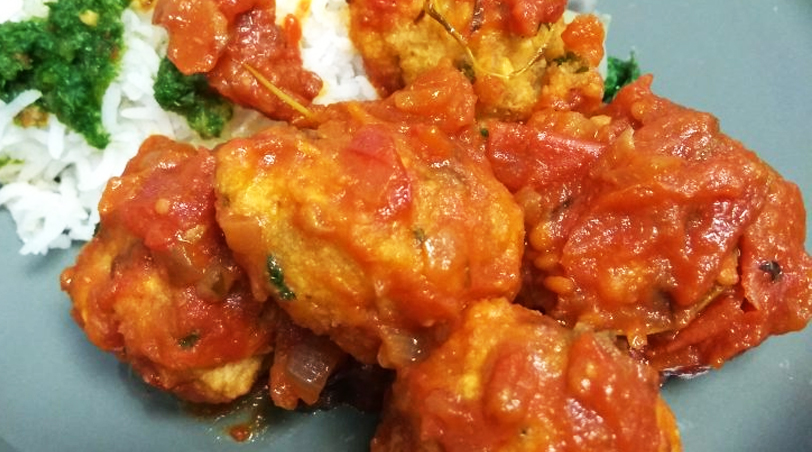
Taste of Mauritius
Madeleine and Clancy Philippe have written articles and contents for numerous magazines, food guides and reviews on Mauritian Cuisine, such as the “Foods and Drinks” section of the Lonely Planet Guide to Mauritius, Rodrigues and Seychelles. Their web site “Recipes from Mauritius” broke new ground in 1994 and was the first web site ever created to promote Mauritian Cuisine. It has since sustained its number 1 Google rating. They have also assisted in the compilation of Mauritian food related articles published by various writers and marketing agencies.
They have also researched the original recipes from which many of today’s Mauritian dishes originated from. This has led to many interesting discoveries in relation to the close and emotional relationship between the settlement history of Mauritius and the evolution of Mauritian Cuisine. This emotional relationship is important as there is nothing like good Mauritian food on the table to bring Mauritians together, wherever they may be worldwide.
Since Madeleine’s passing in 2011, Clancy co-wrote with the help of Madeleine’s recipe notes, the Gourmand “Best in the World” Award winning book “Best of Mauritian Cuisine”. This book has enjoyed enormous success and is now distributed and sold worldwide.
Clancy and associates can advise upon any facet of Mauritian Cuisine, ranging from cooking techniques through the history of Mauritian cuisine to the choice of dishes on the menu. Contact us on +61 3 412 018 505 or clancy@cjp.net




